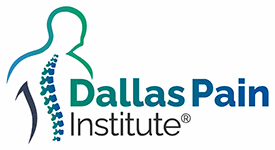Call for an appointment today! (903) 892-1999
Nerve Root Blocks
A nerve root block is a specialized medical procedure designed to address pain in the arm or leg that is associated with a single nerve. This treatment involves injecting a mixture of local anesthetic and steroid near the area where the nerve exits the spinal column. Performed under x-ray guidance, a nerve root block may serve both diagnostic and therapeutic purposes. It can pinpoint the source of pain and provide temporary or even permanent relief. Let’s delve into the details of this procedure, its preparation, and post-procedure care.
General Pre-Procedure Instructions
- Allergies: Notify the staff of any allergies, especially to iodine.
- Eating: Avoid eating on the morning of the procedure if you will be receiving sedation.
- Insulin Adjustment: Insulin-dependent diabetics may need to modify their morning dose if sedated.
- Routine Medications: Continue normal medications such as high blood pressure or diabetic drugs.
- Blood Thinners: If you are on Coumadin or similar medications, inform staff to plan accordingly.
- Driving: It is advisable to have someone drive you home post-procedure.
The Nerve Root Block Procedure
- Preparation: An IV may be initiated if deemed necessary. The patient is positioned on their stomach for optimal x-ray visualization.
- Cleansing: The area around the spine is thoroughly cleaned with antibacterial soap.
- Numbing: A small skin area is numbed with a stinging medicine.
- Needle Positioning: Under x-ray guidance, a needle is directed above the nerve root, and contrast dye is used to ensure accurate positioning.
- Injection: A mixture of local anesthetic and steroid is administered.
What to Expect After the Procedure
- Food and Drink: No restrictions unless otherwise specified.
- Activity Level: Normal activities can be resumed the same day.
- Follow-up: Repeat blocks may be scheduled, typically in a series of three, about a month apart.
- Sensation: Weakness or numbness in the back or legs may be felt temporarily.
- Driving: Driving is not recommended on the procedure day.
The nerve root block is a valuable tool in managing localized nerve pain. It can both diagnose the source of discomfort and provide relief, sometimes leading to a series of repeated blocks or even suggesting surgical options. Careful adherence to pre- and post-procedure guidelines ensures the best possible outcome, allowing you to return to your daily routine with minimized discomfort. If you are considering this treatment, consultation with a qualified healthcare provider can provide personalized information and guidance tailored to your specific situation.
ALL TREATMENTS
Caudal Epidural Steroid Injection
Cervical Epidural Steroid Injection
Inferior Hypogastric Nerve Block
Kyphoplasty for Vertebral Fractures
Lumbar Epidural Steroid Injections
Lumbar Sympathetic Plexus (Ganglion) Block
Minimally Invasive Lumbar Decompression (MILD Procedure) for Spinal Stenosis
Radiofrequency Ablation of Facet Joints
Radiofrequency Ablation of Genicular Nerves of the Knee
Spinal Cord Stimulation Implants
Superior Hypogastric Nerve Block
Superion InterSpinous Spacer for Spinal Stenosis
Transforaminal Epidural Steroid Injection or Selective Nerve Root Block
